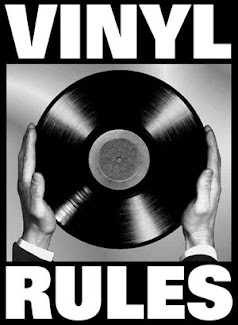 Glam rock emerged in the post hippie period of the late 60’s and early 70’s. It is commonly accepted that it began when Tyrannosaurus Rex an acoustic, psychedelic, folk rock band lead by one time mod Marc Bolan, shortened it’s name to T. Rex and released the number 1 UK single “Ride A White Swan” in December 1970.
Glam rock emerged in the post hippie period of the late 60’s and early 70’s. It is commonly accepted that it began when Tyrannosaurus Rex an acoustic, psychedelic, folk rock band lead by one time mod Marc Bolan, shortened it’s name to T. Rex and released the number 1 UK single “Ride A White Swan” in December 1970.
Marc Bolan also changed his professional image by wearing makeup and glitter, first seen during an appearance on Top of the Pops in late 1970. It was this appearance along with a mix of bisexuality and a 1950s-futurist hard rock-pop sound that laid the foundation for glam rocks early sound and image.
Following Bolan's successful metamorphosis, David Bowie (seen as the other major player in the scene) altered his own professional persona to fit the new concept (and further explore the bisexual glam image), by creating Ziggy Stardust. Ziggy was strongly influenced visually by Stanley Kubrick's movies ‘A Clockwork Orange’ and ‘2001: A Space Odyssey’, and as with Marc Bolan, the music was harder-sounding and more aggressive than his previous work.
 It was David Bowie's Ziggy Stardust character that brought Glam rock its relatively modest popularity in America, and lead to American artists such as Lou Reed, Iggy Pop, The New York Dolls, Jobriath, and Alice Cooper adopting Glam or Glam-influenced styles.
It was David Bowie's Ziggy Stardust character that brought Glam rock its relatively modest popularity in America, and lead to American artists such as Lou Reed, Iggy Pop, The New York Dolls, Jobriath, and Alice Cooper adopting Glam or Glam-influenced styles.
Also caught up in Bolan’s wake, previously existing pop-rock bands and artists such as, Slade and Sweet (originally called Ambrose Slade and The Sweetshop respectively) would emerge and have greater commercial success during 1971-72. Pure pop artists like Mud, Gary Glitter and Alvin Stardust would also rise to fame in 1972-73, as a second generation of glam acts conquered the charts, making glam a national music phenomenon in the UK.
Glam itself can be seen as a nostalgic mixture of various styles, from both the visual and musical arts. This ranged from 1930s Hollywood glamour, and 1950s rock n' roll teenage rebellion, to a bit of pre-war cabaret theatrics, with some ancient and occult mysticism and mythology added for good measure.

But it was science fiction imagery that was at the core of glam rock's stylistic pallet. Themes of spaceflight and alien encounters were common in the glam rock spectrum. Glam style strongly referenced the "space Age" with silver astronaut-like outfits and multicoloured hair. This trend was often musically represented with science-fiction/fantasy-oriented lyrics and music tinted with early synthesizers such as the Moog.
So with its flamboyant costumes, androgyny and colourful visual styles, together with a camp, theatrical blend of old style glamour, transvestism and futurism, glam rock dominated the early seventies musical backdrop in the UK. Although seen predominantly as a teenage and youth phenomenon, glam rock also consciously wallowed in more adult themes and 1970’s drug and sleaze excess. The stars of Andy Warhol's films and his stage play ‘Pork’ were crucially influential to the nascent glam movement. The Warhol set were provocatively camp, flamboyant, and sexually ambiguous.
Another element in the melting pot of glam rock was recent homosexual reforms in the United Kingdom and the militant Stonewall Riots for gay rights in the US. Sexual ambiguity was briefly in vogue as an effective cultural "shock tactic". David Bowie caused a media uproar in 1972 when he told the UK press he was bisexual. But while glam rock went against traditional gender-representation, genuinely gay glam rock musicians were rare. The late Jobriath was amongst rocks first openly gay performers, while Queen's Freddie Mercury stayed mostly "in the closet".
“Though primarily a UK-centred genre and of somewhat nebulous impact in the US, glam rock rapidly influenced popular culture to the point where acts as disparate as The Osmonds and the Rolling Stones wore some glitter or makeup. Even though their own work had little if any connection to science fiction, sexual ambiguity or high art, the genre's pop stars also wore makeup and 'futuristic' garb. However, as the genre progressed, it became stylistically diluted and commercialised”.
By the end of 1975 glam rock was in its final days. Acts like Slade, Sweet and T Rex were losing popularity and record sales, as the public found other music and trends to take there place. While artists such as David Bowie and Roxy Music were exploring different musical avenues and genres that didn’t have glam rocks restrictions.
“Is this the real life?
Is this just fantasy?
Caught in a landslide.
No escape from reality”.
Bohemian Rhapsody - Queen, December 1975







.JPG)


























.jpg)























